Pains au Lait are smooth and fluffy French milk buns, that are a well-liked afternoon tea deal with for youngsters in France. Make these scrumptious buns at house with this step-by-step recipe.
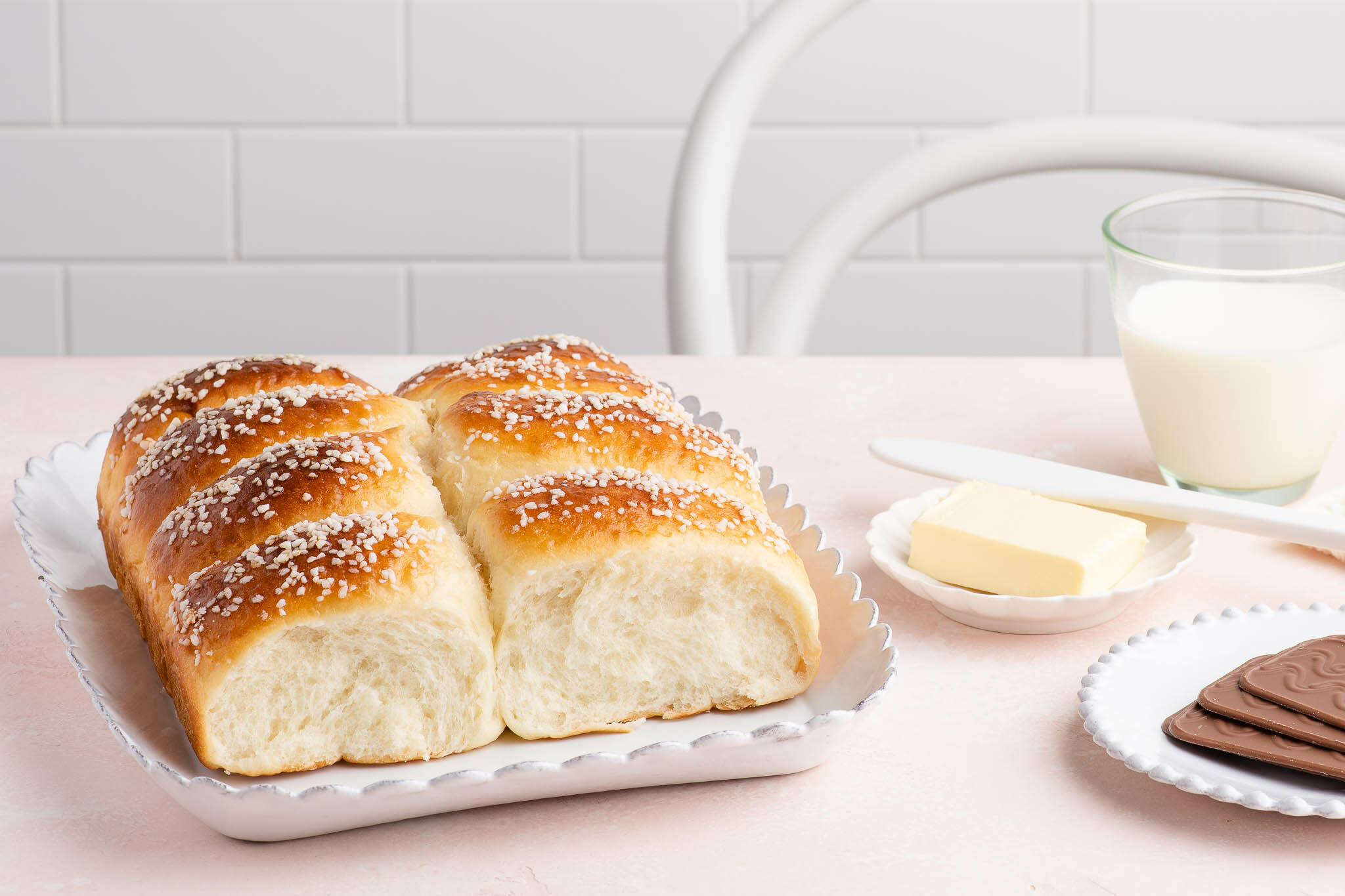
French Milk Bread
Everyone knows about Japanese Milk Bread, and we learn about French Brioche. However one thing which is probably rather less identified outdoors of France is French Milk Bread, or Pains au Lait. French Milk Bread is massively fashionable inside France, however it’s primarily marketed for youngsters, particularly for snacks and afternoon tea. However we large youngsters love them too!
What are Pains au Lait?
Pains au Lait, or Petit Pains au Lait, interprets as milk bread in French. They’re a candy bun made out of an enriched dough, and style similar to a French brioche bun, however they’re made with much less butter. That is fairly apparent whenever you have a look at the color of the dough; the dough of a Ache au Lait bun will likely be a lot whiter in color than a brioche bun, that are all the time yellow in color.
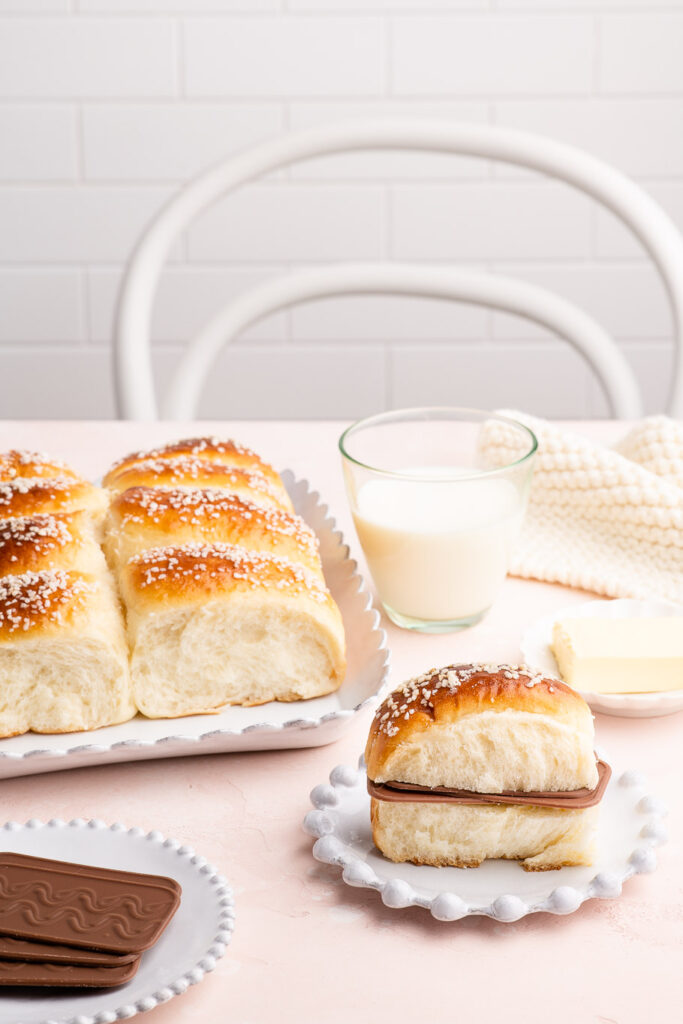
Pains au Lait
You will discover Pains au Lait at many French bakeries, and they’re usually formed in an extended oval bun with an uncovered seam down the center.
They’re generally bought plain, or sprinkled with pearl sugar, and even comprise chocolate chips all through.
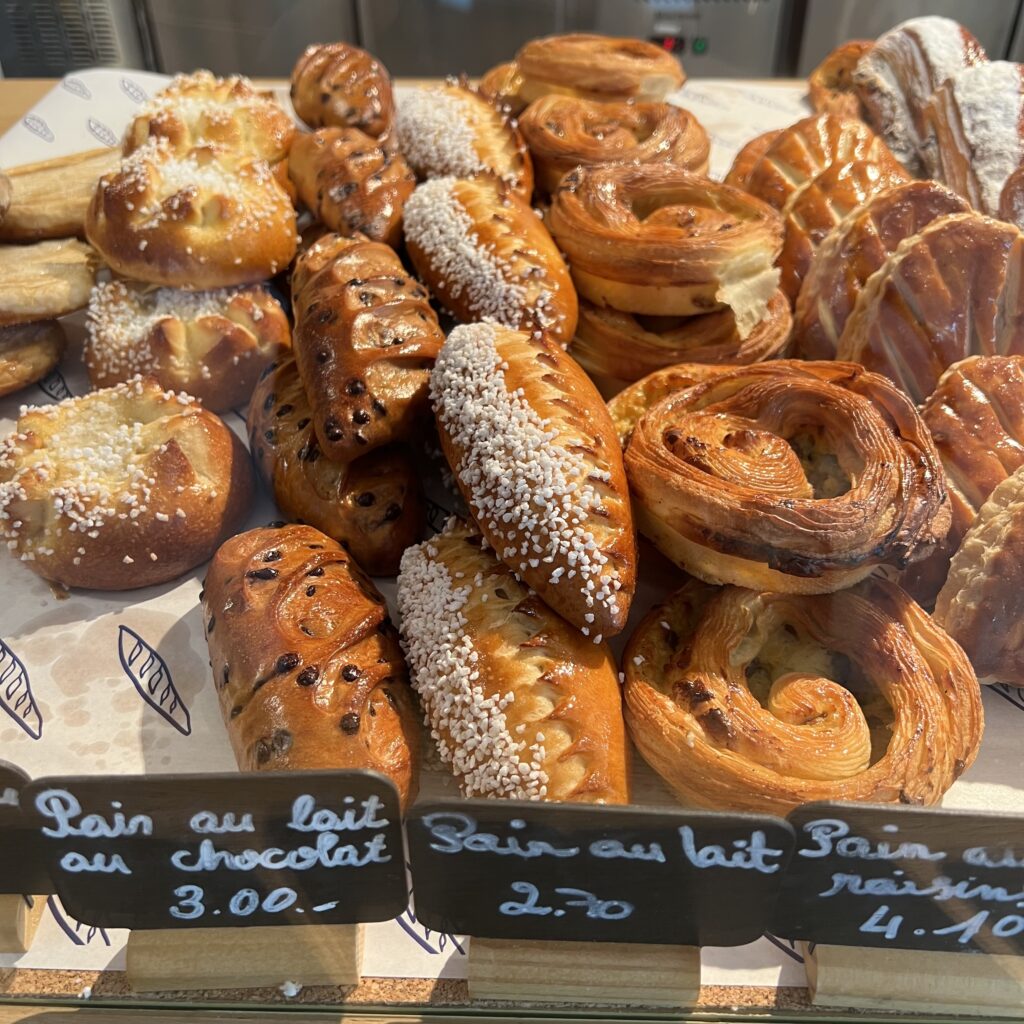
Pains au Lait are so fashionable in France, particularly as a goûter or afternoon tea snack for youngsters, that you will discover a whole grocery store aisle stuffed with completely different varieties of those buns. The industrially produced buns are very smooth and squishy, they usually due to this fact attraction extra to youngsters than most do-it-yourself or bakery variations.
These buns are additionally fairly fashionable in Switzerland, the place they’re known as Milchbrötchen within the German-speaking elements. My youngsters adore it when they’re served these buns at Hort (after-school care) within the afternoons.
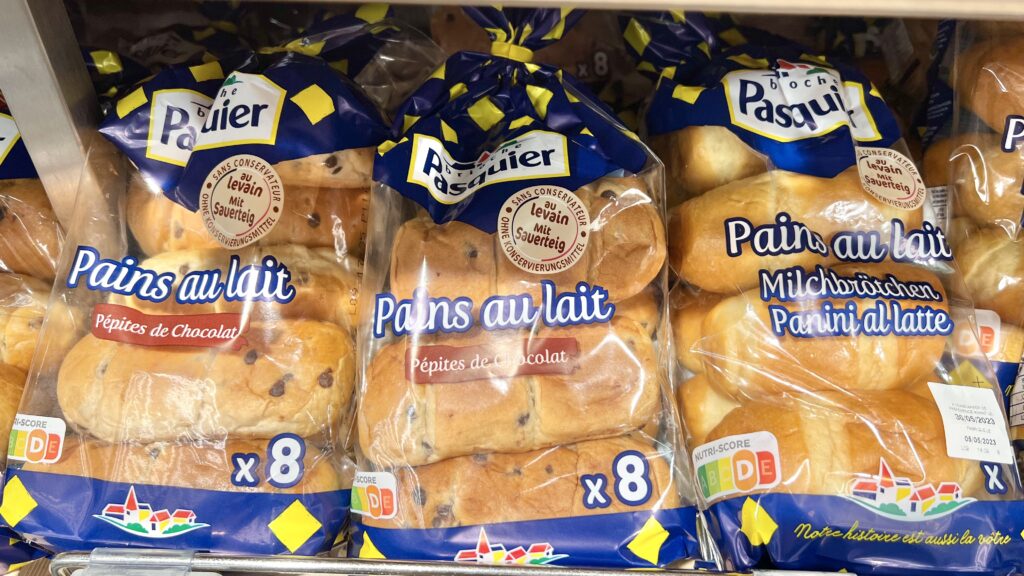
Pains au Lait Recipe
I occur to like the mass-produced Pains au Lait 🙂 In the identical means that I like plastic white bread for making toast, there’s something concerning the unnaturally smooth and bouncy grocery store variations of Pains au Lait that could be very comforting and satisfying to eat.
So my recipe for Pains au Lait makes an attempt to replicate the mass-produced model in form and texture, somewhat than the form you’ll extra generally discover in French bakeries. Which means that the buns are formed in small logs and baked shut collectively, in order that they rise extra, which is able to give them a softer and fluffier texture.
I exploit my recipe for Finger Buns to make Pains au Lait, which is my go-to enriched dough recipe that I exploit for a lot of several types of buns, reminiscent of Cream Buns, Cinnamon Rolls, Cardamom Buns, Chinese language Coconut Buns … the record is limitless!
You can also make the buns as large or as small as you want. I make them on the small aspect in order that my youngsters can pack them of their lunch field for morning tea at college.
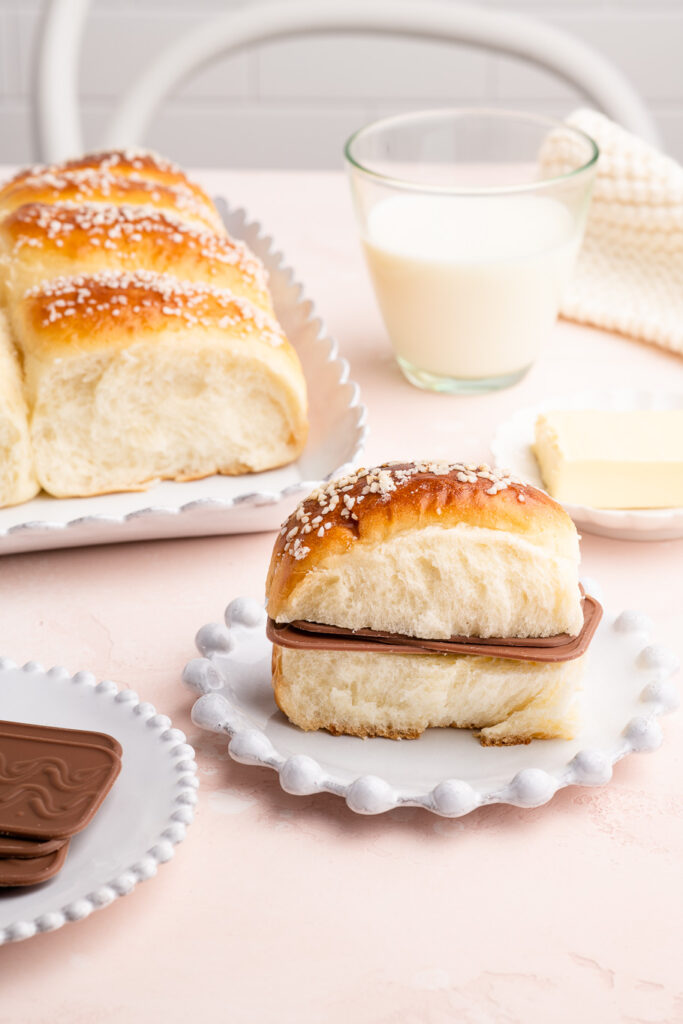
Learn how to Make Pains au Lait
Step 1
Measure the flour, sugar, yeast and salt into the bowl of an electrical stand mixer. Frivolously combine the elements collectively.
Step 2
Add the egg to the bowl. Slowly add the nice and cozy milk (you could not want all of it), and evenly beat the whole lot with the dough hook till it comes collectively into a big ball of dough. Solely add as a lot milk as you want to carry the elements collectively right into a dough.
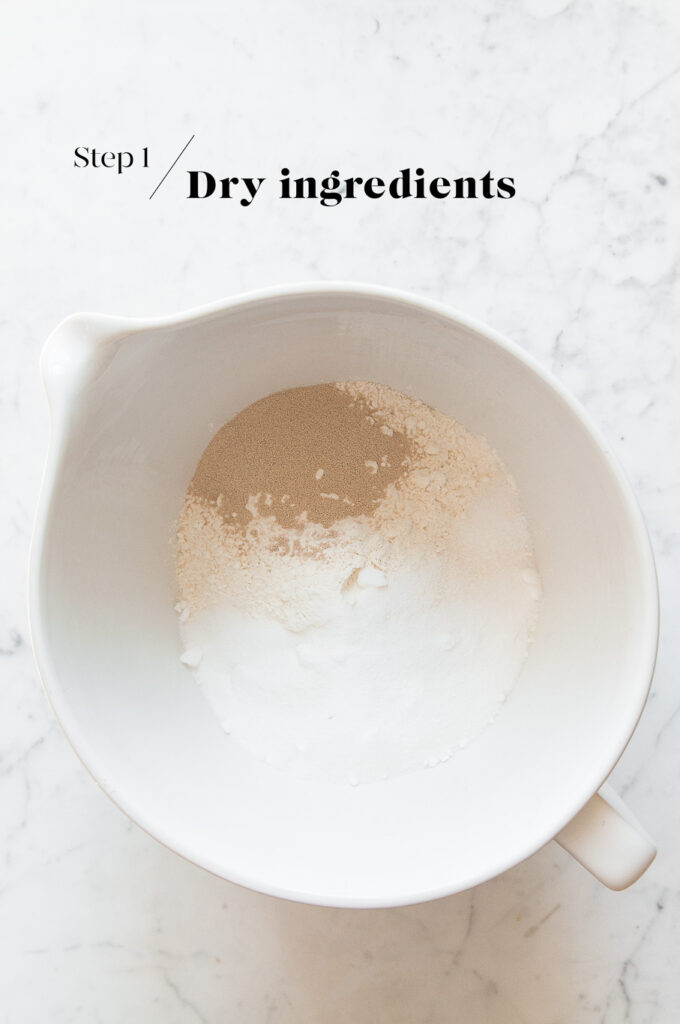
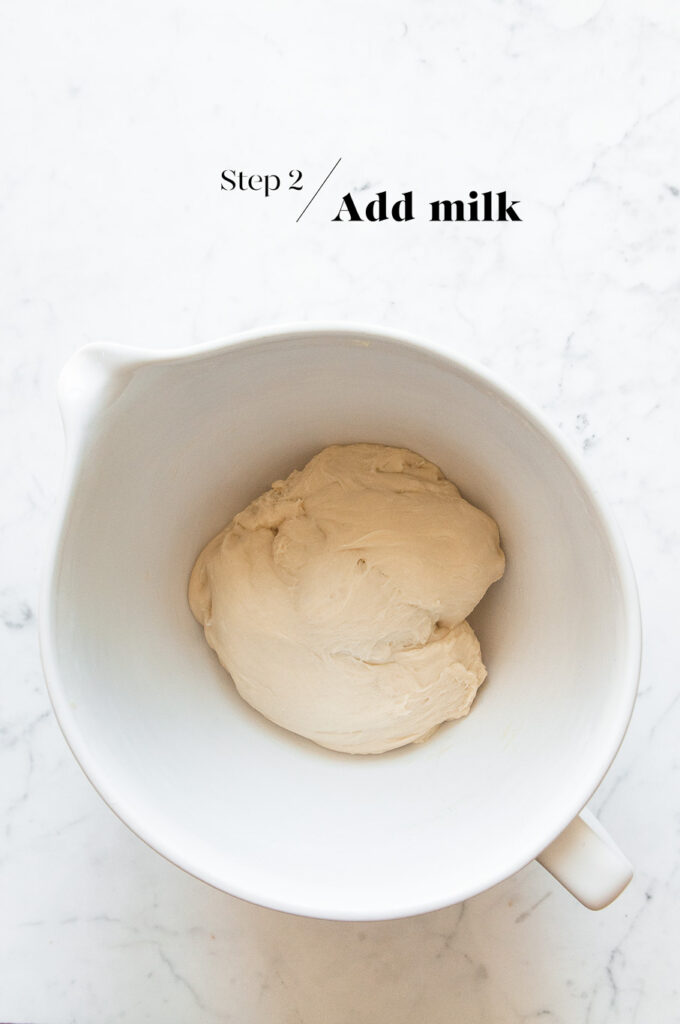
Step 3
Slowly incorporate the butter, one tablespoon at a time, till the entire butter has been used.
Then enhance the velocity to medium and proceed kneading with the dough hook for 15 to twenty minutes, or till the dough is easy and elastic.
Step 4
Frivolously oil a big mixing bowl, and place the dough into the bowl. Cowl the bowl with a clear tea towel and depart it someplace heat for 1 to 1.5 hours, or till the dough has doubled in dimension.

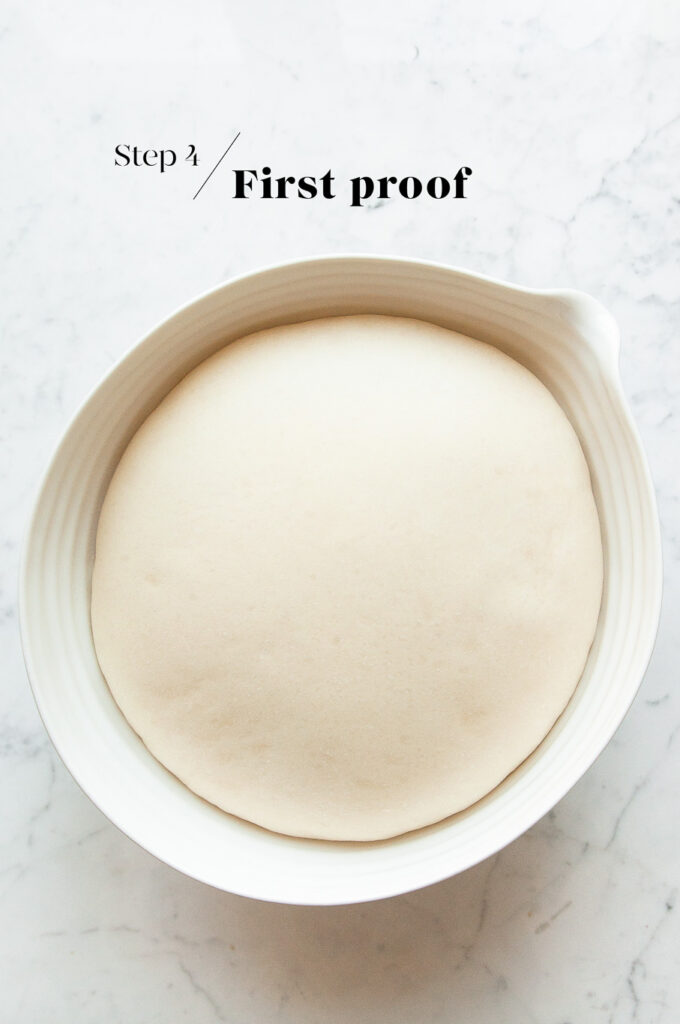
Step 5
As soon as the dough has doubled in dimension, gently take away the dough from the bowl. The dough will deflate as you deal with it.
Divide the dough into 16 equal parts. When you have time, use a digital scale so that every bun is similar dimension. On this event, I didn’t use a scale, so you may see beneath that my buns range in dimension barely, however that’s not a nasty factor 😉
Roll each bit of dough right into a ball by pulling the sides in direction of the centre, after which rolling right into a easy ball.
Then flatten every ball of dough right into a small log. The log must be roughly half the width of your baking pan. What you’re aiming to do is replenish your baking pan with two rows of logs.
Repeat till you may have 16 logs of dough.
Butter a baking pan and place the logs of dough side-by-side, leaving a little bit of room for them to show and puff up.
I exploit two baking pans which measure 17 x 27 x 4 cm (7 x 11 x 1.5 inch), with a cake pan divider for the second pan. Ideally, you need a high-sided baking pan in order that the buns can rise; it’s the top which makes the buns smooth and fluffy.
After you have stuffed the baking pans with the logs of dough, depart them someplace heat for about half-hour, or till they’ve overrated barely and are touching each other.
Step 6
As soon as the dough has overrated properly, evenly brush with egg wash, and generously sprinkle with pearl sugar.
Bake in a preheated oven at 220°C/428°F for about 25 minutes.
Verify the buns at about 10 minutes, and if they’re browning too rapidly, cowl them with a free sheet of foil for the remainder of the baking time. The buns are cooked if an inside thermometer reads 85°C/185°F.
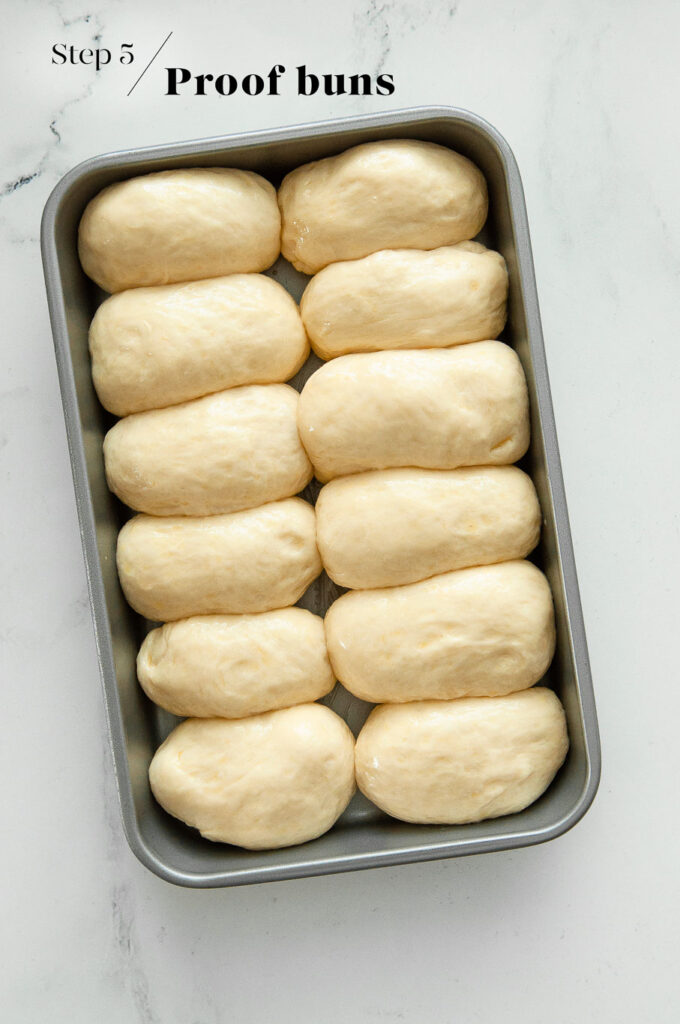
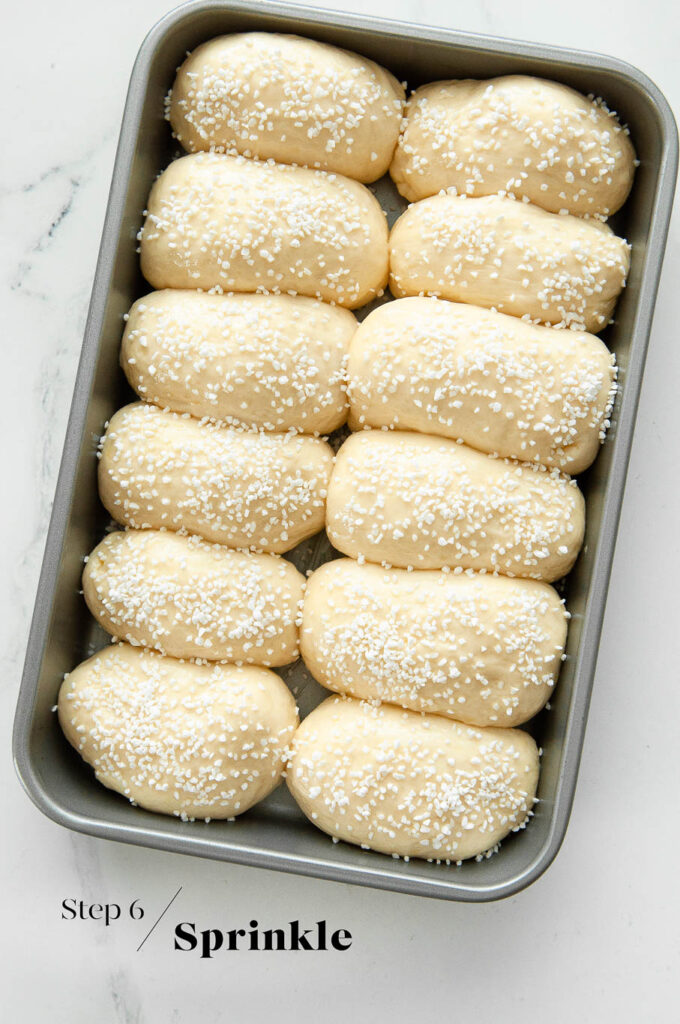
Learn how to Serve Pains au Lait
Pains au Lait could be eaten simply as they’re. They’re sometimes sprinkled with pearl sugar for a little bit of sweetness, or you can even discover varieties stuffed with chocolate chips.
However my favorite means of serving and consuming Pains au Lait is a French/Danish hybrid: you cut up the bun in half, slather generously with salted butter, after which place a chunk of chocolate in the midst of the bun to create – in impact – a chocolate sandwich.
In France, a big piece damaged from a pill of chocolate is usually used as a sandwich filling, whether or not wedged in a Ache au Lait or piece of baguette.
However in Denmark, they use chocolate sheets (or Pålægschokolade) that are made particularly for sandwiches. The chocolate is wafer-thin, so it’s a lot simpler to chew into in a sandwich, even should you add a number of layers of them. These chocolate thins are available in milk and darkish chocolate, they usually additionally are available in just a few styles and sizes. I like to top off on them each time we’re in Denmark.
Clearly, should you can’t discover Danish sandwich chocolate, you should utilize any good-quality chocolate that you just like. My tip is to decide on a skinny, wafer-like chocolate which will likely be straightforward to chew into.
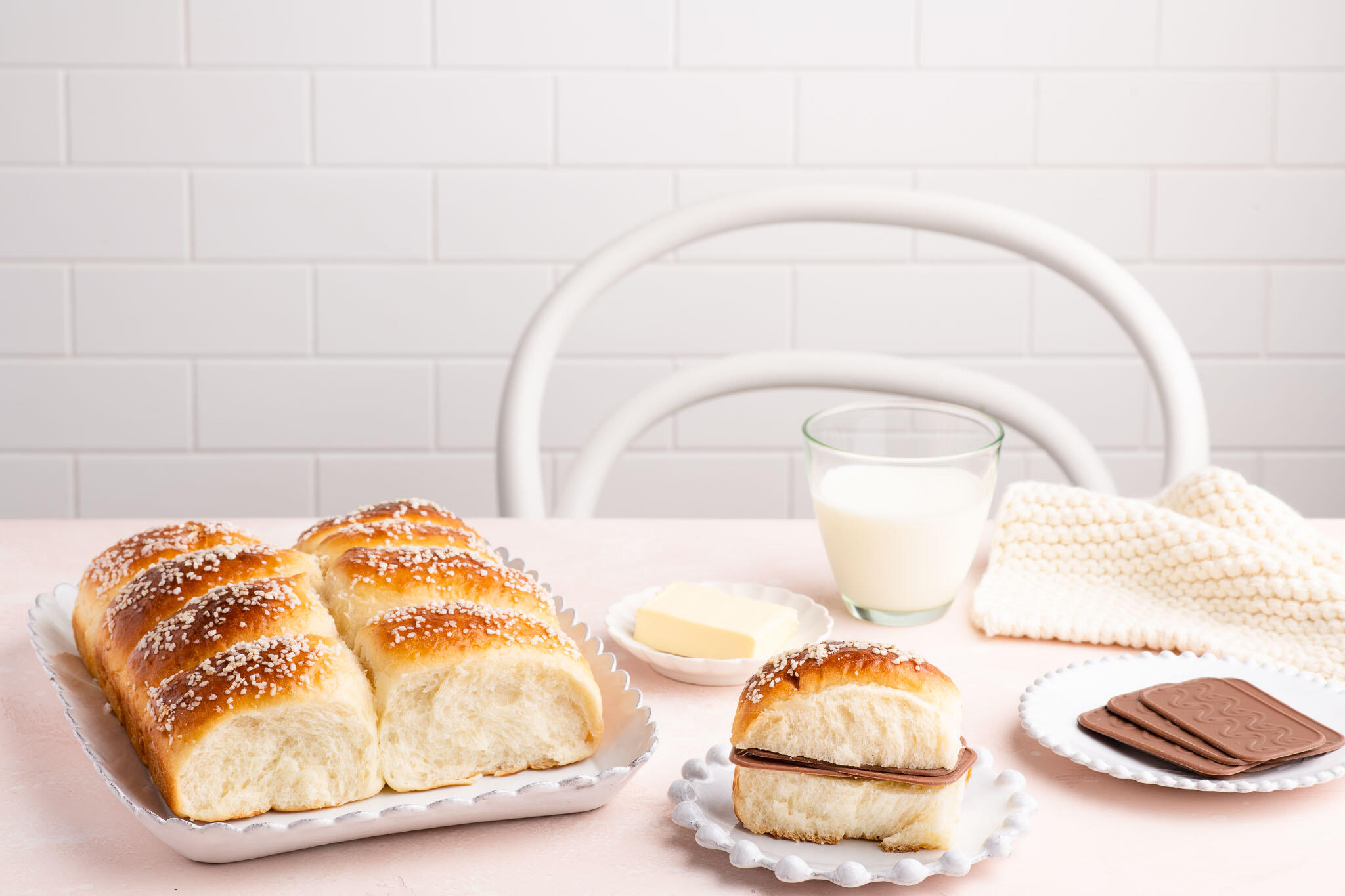
Suggestions for Making Bread Dough Forward of Time
I like baking bread, however I don’t love getting up further early to get began on the dough. So I sometimes make the dough the night time earlier than and permit it to rise slowly within the fridge in a single day. The longer proofing time has the additional advantage of permitting the dough to develop extra flavour and a greater texture. Come the morning, the dough may have at the very least doubled in dimension, and will probably be prepared for shaping as per the recipe.
To make the dough the night time earlier than:
- Make the dough as per the recipe.
- Place the dough into a big oiled bowl.
- Cowl the bowl with plastic wrap or a reusable bowl cowl.
- Place the bowl into the fridge.
- Let the dough rise in a single day, or for at the very least 8-10 hours.
- The following morning, the dough ought to have at the very least doubled in dimension.
- Gently take away the dough from the bowl.
- The dough is prepared for shaping and the second proof as per the recipe.
- Because the dough will likely be chilly from the fridge, the second proof might take barely longer.
Pains au Lait (French Milk Bread)

- Resting Time: 2 hours
- Prep Time: 1 hour
- Cook dinner Time: 30 minutes
- Whole Time: 1 hour half-hour
- Yield: Makes 16 buns
- Class: Bread
- Methodology: Oven
- Delicacies: French
Pains au Lait are smooth and fluffy French milk buns, that are a well-liked afternoon tea deal with for youngsters in France. Make these scrumptious buns at house with this step-by-step recipe.
Components
For the Pains au Lait
- 600 g (4 cups) white bread flour
- 110 g (1/2 cup) caster sugar
- 1 teaspoon high-quality salt
- 14 g (4 teaspoons) instantaneous dried yeast (see Kitchen Notes beneath)
- 375 ml (1 1/2 cups) milk, warmed to 37°C/98°F
- 60 g (4 tablespoons) butter, softened
For the Egg Wash
- 1 egg, evenly crushed
- 1 tablespoon milk
To Enhance
Directions
To Make the Dough
- Measure the flour, sugar, salt and yeast into the bowl of an electrical stand mixer.
- Frivolously combine the elements collectively utilizing the dough hook.
- Slowly pour within the heat milk, and proceed mixing till the whole lot comes collectively right into a tough dough.
- Add the butter, one tablespoon at a time. As soon as the butter has been totally included into the dough, add the following tablespoon of butter.
- As soon as the entire butter has been added, proceed kneading the dough on medium velocity for about 15 to twenty minutes.
- The dough is prepared when it’s smooth and easy, and likewise barely elastic in texture whenever you attempt to stretch it. When you poke the dough softly, it ought to bounce again immediately.
First Proofing Interval
- Frivolously oil a big mixing bowl.
- Place the dough contained in the bowl.
- Cowl the dough with a clear tea towel, cling movie, or a reusable bowl cowl.
- Depart the dough someplace heat for 1 to 1.5 hours, or till the dough has doubled in dimension (see Kitchen Notes beneath).
To Portion the Dough
- As soon as the dough has doubled in dimension, gently take away the dough from the bowl. The dough will deflate as you deal with it.
- Gently pat the dough right into a spherical form.
- Portion your dough into 16 equal items. When you have some kitchen scales, weigh the dough after which divide this quantity by 16. This would be the weight of every bun dough.
- Frivolously grease two rectangular pans measuring 17 x 27 x 4 cm (7 x 11 x 1.5 inch) or comparable.
To Form the Dough
- Gently roll each bit of dough right into a ball by pulling the sides in direction of the centre.
- Then flatten every ball of dough right into a small log. The log must be about half the width of your baking pan.
- Repeat with the remaining items of dough.
- Prepare the items of dough within the baking pan, permitting for a little bit of area between them to rise and puff up. As solely half of the second pan will likely be used, I exploit a cake pan divider to maintain the buns cosy.
Second Proofing Interval
- Cowl the pans with a clear tea towel, and place the pans someplace heat for about half-hour, or till the buns have risen and overrated barely.
- Throughout this time, preheat the oven to 200°C/390°F (with out fan) with a steel baking tray on the center shelf.
- Make the egg wash by evenly whisking collectively the egg and milk.
To Bake the Pains au Lait
- Brush the buns with some egg wash.
- Sprinkle the buns generously with pearl sugar.
- Bake for about 25 minutes, or till the buns are evenly golden. Verify the buns at about 10 minutes, and if they’re browning too rapidly, cowl them with a free sheet of foil for the remainder of the baking time. The buns are cooked if an inside thermometer reads 85°C (185°F).
- Gently take away the buns (intact) to a wire rack, and depart them to chill utterly.
Kitchen Notes
 MAKE AHEAD TIPS
MAKE AHEAD TIPS
To begin the dough the night time earlier than, make the dough as per the recipe. Place the bowl of dough (coated) within the fridge to proof in a single day, or for at the very least 8 to 10 hours. Throughout this time, it ought to have at the very least doubled in dimension. The following day, proceed with the remainder of the recipe. Because the dough will likely be chilly, it could require a bit extra time for the second proofing interval.
 DIFFERENT TYPES OF FLOUR
DIFFERENT TYPES OF FLOUR
* This recipe works properly with plain flour (all-purpose flour) or sturdy white bread flour.
* For Swiss readers: I exploit Zopfmehl (or farine pour tresse) when making bread and enriched dough.
 DIFFERENT TYPES OF YEAST
DIFFERENT TYPES OF YEAST
* Please observe that there’s a distinction between instantaneous yeast (additionally known as instantaneous dried yeast or fast-action dried yeast) and dried yeast (additionally known as energetic dry yeast). If you’re unsure what sort of yeast you may have, please test the packaging for directions on the best way to use the yeast.
* With instantaneous yeast, you may add it on to the flour combination with out having to activate it first.
* With dried yeast, you’ll need to activate it first (often in some heat liquid).
* If you’re utilizing contemporary yeast, you’ll need about one block (40 g contemporary yeast = 14 g instantaneous dried yeast). Crumble the contemporary yeast into the nice and cozy milk, and stir to dissolve the yeast.
 PROOFING THE DOUGH
PROOFING THE DOUGH
Dough wants a heat atmosphere for the yeast to activate and trigger the dough to rise. When you don’t have a heat place in your house, attempt one of many following concepts:
* Within the oven with the oven gentle switched on (works just for some ovens).
* Within the oven with a tray of boiling water on the underside shelf.
* Within the oven or a steamer oven at a low temperature of about 25-40°C (77-104°F).
 OVEN & STOVE TEMPERATURES
OVEN & STOVE TEMPERATURES
All recipes on this web site have been examined on an induction range and/or with a standard oven (i.e. an oven with out fan). All recipes on this web site use temperatures for a traditional oven, except in any other case talked about. Convection ovens (i.e. fan-forced ovens) are sometimes 20°C/70°F hotter than standard ovens, however please test your producer’s handbook.
 CONVERSIONS
CONVERSIONS
To transform from cups to grams, and vice-versa, please see this useful Conversion Chart for Fundamental Components.

